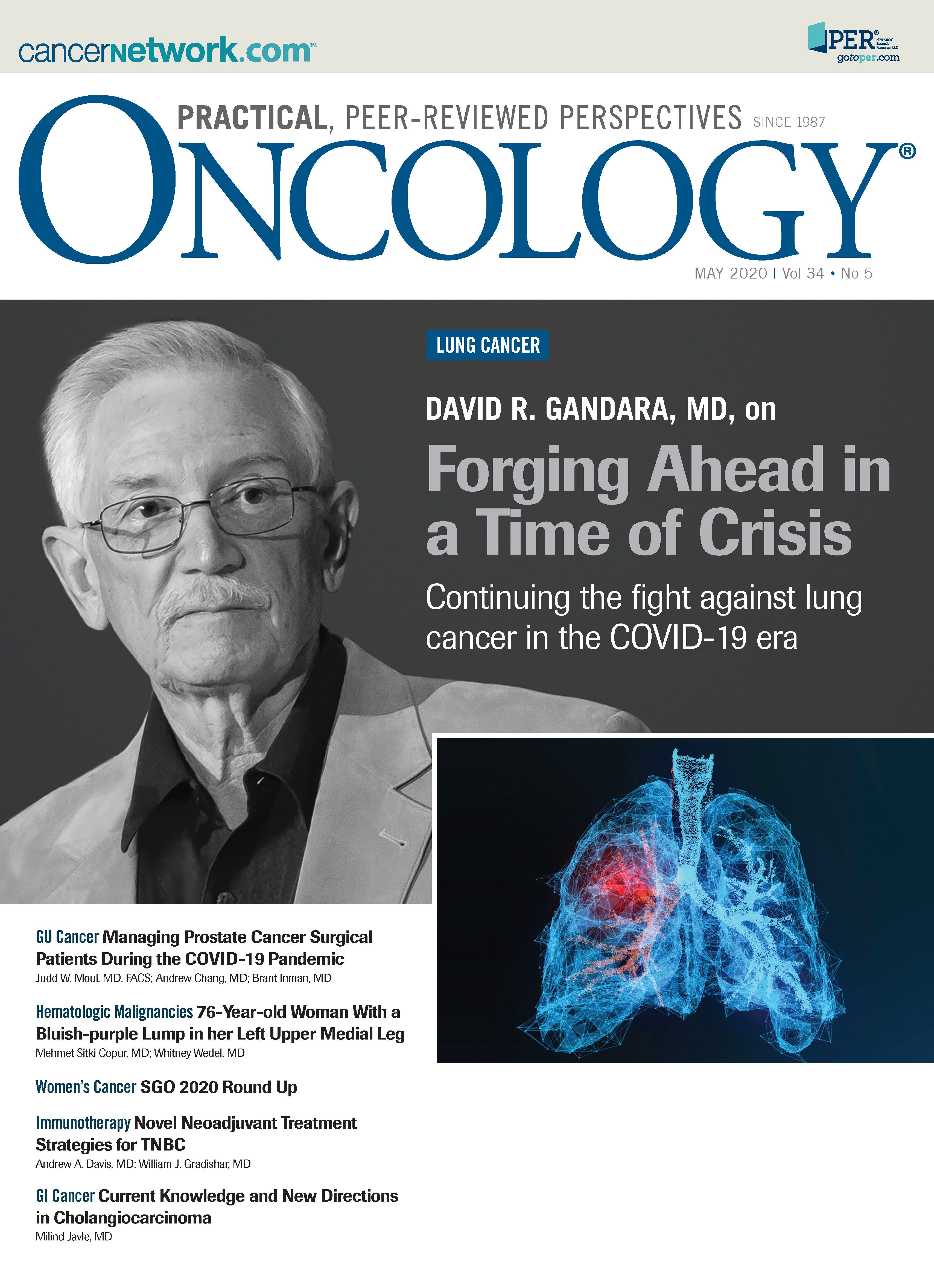Fighting 2 Enemies: Cancer and COVID-19
Editor in chief Julie M. Vose, MD, MBA discusses the difficulties of treating and caring for patients with cancer during the COVID-19 pandemic.
The coronavirus disease 2019 (COVID-19) pandemic is affecting every aspect of medical care worldwide. Our patients with an oncologic diagnosis are among the most vulnerable populations. In addition, oncology patients often have other known risk factors, such as advanced age and other comorbidities, that put them at the greatest risk for COVID-19 complications should they become infected. Although few data are published yet, results from the experience in Wuhan, China, demonstrated that patients with cancer who were infected with COVID-19 had increased complications and mortality.1 In this study population, 28 patients with COVID-19 infection had a median age of 65 years (range, 56-70 years) and lung cancer was the most frequent diagnosis (25%). A total of 15 (53.6%) patients had severe events and the death rate was 28.6%. The risk of developing severe events was even greater if the last antitumor treatment was given within 14 days of hospitalization.
Given this information, most cancer centers have taken drastic steps to modify the risk of COVID-19 infection in our oncology patients and medical staff. As a result, many nonurgent visits in medical, surgical, and radiation oncology subspecialties are being conducted by telehealth. It is estimated that up to 60% to 70% of physician visits are not being performed in person during this time of the pandemic. In addition, chemotherapy sessions or oncologic surgery that require inpatient hospital care are also being evaluated carefully to decrease volume and create hospital capacity for symptomatic patients with COVID-19 infection. We have now become very familiar with online meetings, which work surprisingly well, and in some ways allow increased participation from healthcare workers who may be at several different sites or at home. At many centers, basic research laboratories are closed and clinical research is reduced to include only critical protocols open for our patients with cancer.
Some areas of the country, such as New York City, have gone through a peak time of infection and the incidence of cases and hospitalizations are decreasing. However, other areas of the country, such as the less-populated areas and rural areas, are still experiencing a slow increase in the number of cases and hospitalizations. Each area should be considered separately with respect to oncology preparations and needs. Another concern for all oncology providers is that we may experience secondary peaks of COVID-19 activity over the upcoming weeks to months following the first peak of infection. It will be very difficult for patients who need oncologic care to wait much longer, and oncology practices need to keep financially solvent.
Are there any positive outcomes from this pandemic? We can hope that the use of telehealth will continue for appropriate patients even after this crisis passes. Telehealth visits can be a viable option for some patients as long as the amount of revenue for these visits continues to be the same for in-person visits. Another positive aspect of this pandemic is that health care providers are able to cross state lines to help bolster health care workers in another state. We are certainly learning a great deal about working efficiently and trying to maximize the tests and treatments we have available. This pandemic has also brought out the importance of sharing information worldwide to assist each other against a common enemy.
As oncology health care providers, we must all work together to help our patients get the treatment and active follow-up they need. Perhaps we can use this time to improve and focus oncology care and research for the benefit of our patients.
References:
1. Zhang L, Zhu F, Xie L, et al. Clinical characteristics of COVID-19-infected cancer patients: a retrospective case study in three hospitals within Wuhan, China. Ann Oncol. 2020 (in press);S0923-7534(20)36383-3. doi:10.1016/j.annonc.2020.03.296.

Newsletter
Stay up to date on recent advances in the multidisciplinary approach to cancer.
Oncology Peer Review On-The-Go: Minority Treatment Disparities and Clinical Trial Enrollment
July 6th 2020The first episode of CancerNetwork's podcast Oncology Peer Review On-The-Go explores disparities in cancer care treatment among minorities and the significance of a representative sample in clinical trials.